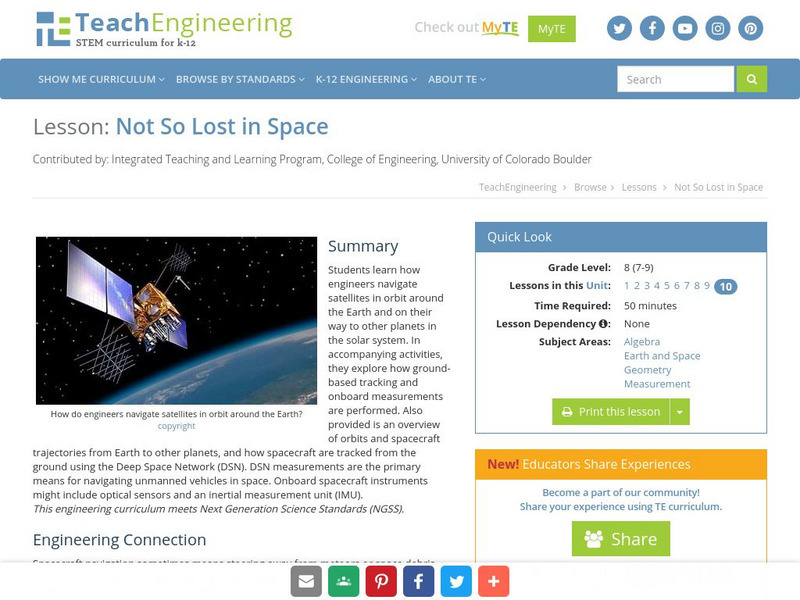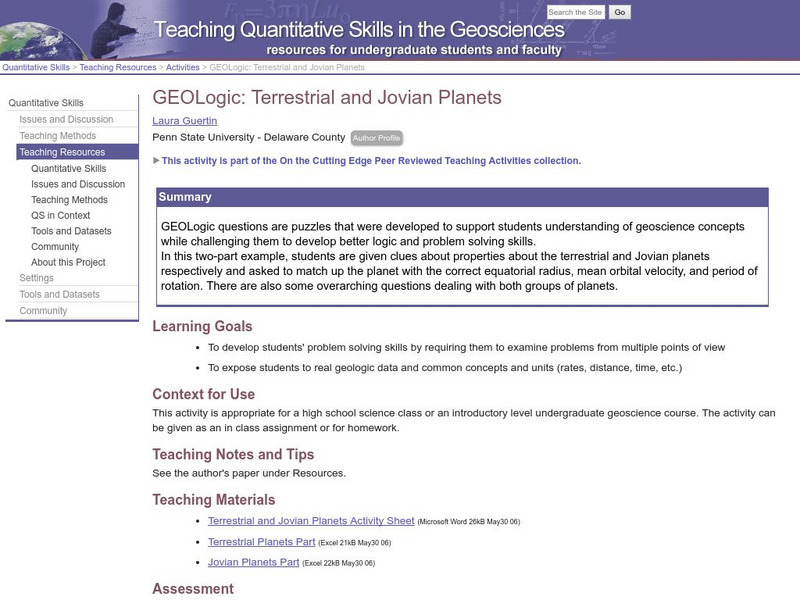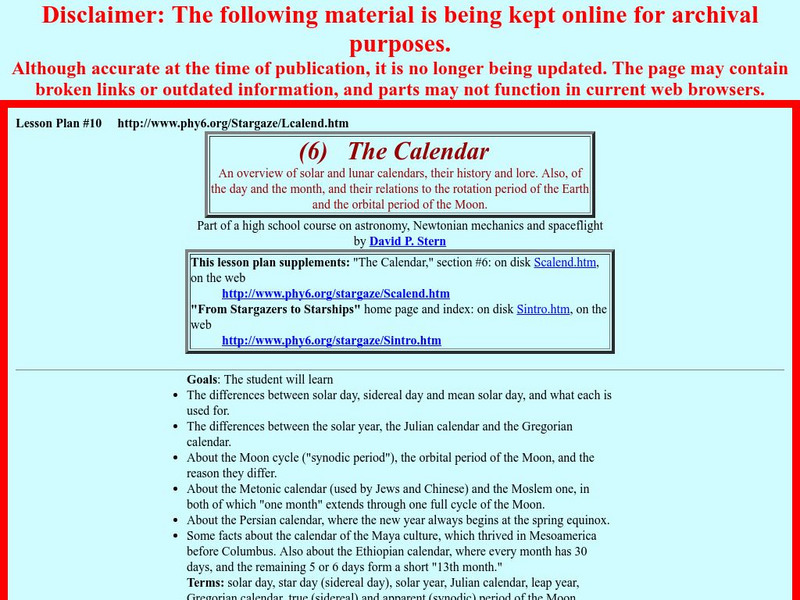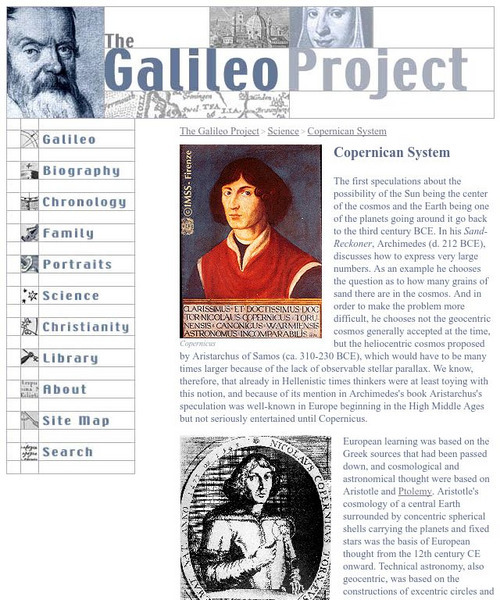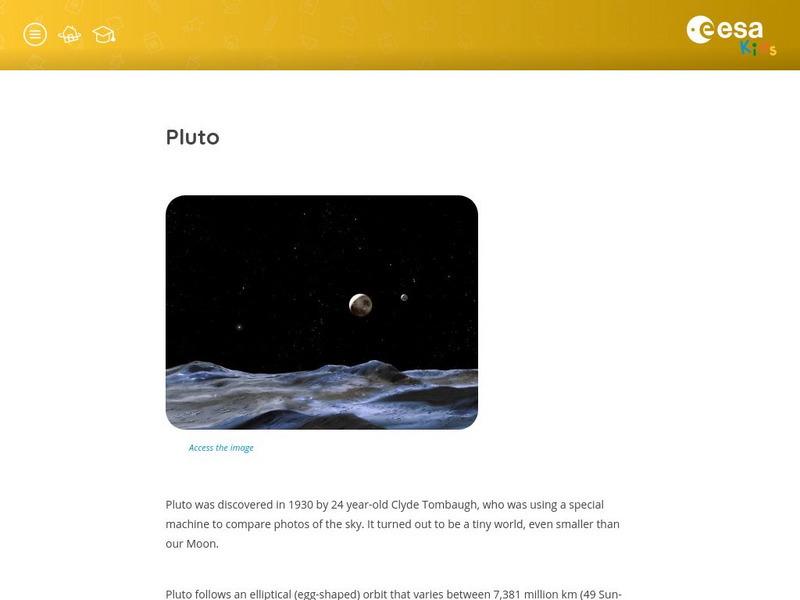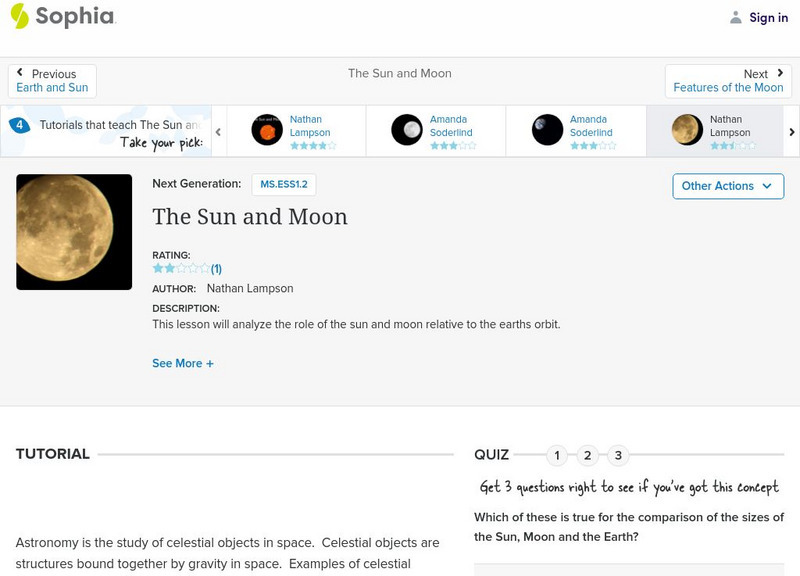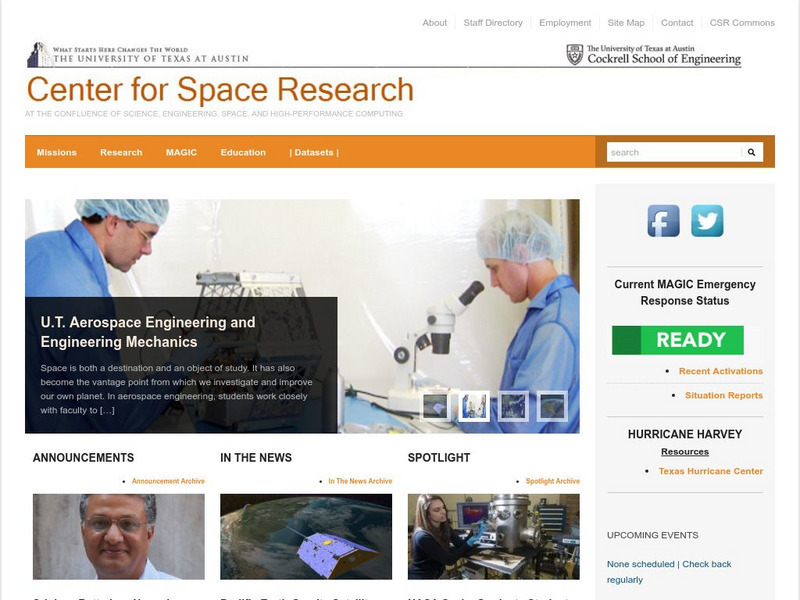TeachEngineering
Teach Engineering: Not So Lost in Space
Young scholars learn how engineers navigate satellites in orbit around the Earth and on their way to other planets in the solar system. In accompanying activities, they explore how ground-based tracking and onboard measurements are...
CK-12 Foundation
Ck 12: Earth Science: Revolutions of Earth
[Free Registration/Login may be required to access all resource tools.] How objects in the solar system orbit around each other.
Science Education Resource Center at Carleton College
Serc: Geo Logic: Terrestrial and Jovian Planets
Through GEOLogic puzzles, learners are given clues about properties about the terrestrial and Jovian planets respectively, and challenged to match the planet with the correct equatorial radius, mean orbital velocity, and period of rotation.
NASA
Nasa Star Child: The Asteroid Belt (Level 1)
Learn about asteroids in our solar system. Discusses where you will find the asteroid belt and what it is. Vocabulary words linked to a glossary of terms and a printable version are available.
Science Buddies
Science Buddies: Kinesthetic Astronomy: Earth's Rotation
This kinesthetic activity will demonstrate concepts like rotation and orbit, clarify movement and direction, and help students understand why earthlings see different things in the sky.
NASA
Nasa: From Stargazers to Starships: The Calendar
A lesson plan that gives an overview of solar and lunar calendars, their history and lore. Also, of the day and the month, and their relations to the rotational period of the Earth and the orbital period of the Moon.For versions in...
Rice University
Galileo Project: The Copernican System
This site from The Galileo Project of Rice University contains information relating to Copernicus's sun-centered solar system theory. Pictures are provided throughout this article along with links to additional information.
Nine Planets
The Eight Planets: Just for Kids
Here is a clear, simple picture of the solar system. Click on the names of the planets to learn more about each. Clicking on underlined terms takes you to more and more detailed scientific information.
CK-12 Foundation
Ck 12: Earth Science: Revolutions of Earth
[Free Registration/Login may be required to access all resource tools.] How objects in the solar system orbit around each other.
European Space Agency
European Space Agency: Esa Kids: Our Universe: Satellites
A basic introduction to artificial, or man-made, satellites. Links to information about the planets and other objects in our solar system are included.
European Space Agency
European Space Agency: Esa Kids: Our Universe: Pluto
A basic overview of the dwarf planet Pluto. Links to information about the other planets and objects in our solar system are included.
European Space Agency
European Space Agency: Esa Kids: Our Universe: Mars
A basic overview of the planet Mars. Links to information about the other planets and objects in our solar system are included.
Enchanted Learning
Enchanted Learning: Zoom Astronomy
Where is our Solar System? How far away is the sun? What makes up the sun? Find out all you want to know about our solar system. This is a comprehensive on-line site about space and astronomy. Check out all of the excitement!
Sophia Learning
Sophia: The Sun and Moon: Lesson 3
This lesson will analyze the role of the sun and moon relative to the earth's orbit. It is 3 of 4 in the series titled "The Sun and Moon."
Sophia Learning
Sophia: The Sun and Moon: Lesson 4
This lesson will analyze the role of the sun and moon relative to the earth's orbit. It is 4 of 4 in the series titled "The Sun and Moon."
Cornell University
Cornell University: Astronomy: Eclipses
This site from the Astronomy Department of Cornell University provides brief introduction to both solar and lunar eclipses. Links are provided for pictures and charts of the eclipses, and this is a good site to check out on the subject.
Cosmo Learning
Cosmo Learning: Introduction to Astrophysics
A collection of audio lectures from an introduction to astrophysics course taught at the University of California, Berkeley. The course discusses the solar system, stars, quantum mechanics, gravitation, and cosmology focusing on how...
Ducksters
Ducksters: Astronomy for Kids: The Planet Earth
This site is astronomy for kids and teachers! Here students can learn about the planet Earth of the Solar System including fun facts, mass, day, year, and distance from the Sun.
NASA
Nasa: Io: Overview: Volcanic Moon
Find out about most volcanically active world in the Solar System, Jupiter's moon named Io.
Science Education Resource Center at Carleton College
Serc: Mn Step: What Sizes Are the Planets and How Do They Move Around the Sun?
An outdoor activity where pupils simulate how planets orbit around the sun using different sizes of balloons.
Curated OER
Harvard University: The Earths Orbit
Students perform many inquiry activities related to Earth's orbit. Included are recording daily temperatures, observing the sun's path over several weeks, tracking sunrise and sunset times, and angle of sunlight. Diagrams make lessons...
Curated OER
Harvard University: The Earths Orbit
Students perform many inquiry activities related to Earth's orbit. Included are recording daily temperatures, observing the sun's path over several weeks, tracking sunrise and sunset times, and angle of sunlight. Diagrams make lessons...
Wonderville Media
Wonderville: Planets
There are eight planets in orbit around our Sun. These planets form our solar system. The eight planets are Mercury, Venus, Earth, Mars, Jupiter, Saturn, Uranus, and Neptune. There are also rocks, moons, comets, and other objects going...
University of Texas at Austin
Ut Austin Center for Space Research
The homepage of the Center for Space Research at the University of Texas whose mission is "to conduct research in orbit determination, space geodesy, the Earth and its environment, exporation of the solar system, as well as expanding the...


